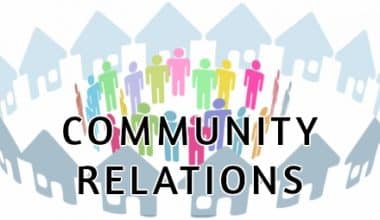Robert N. Butler, a gerontologist, was the first person to use the word “ageism” to explain discrimination against older people. Today, the term can be used to describe any kind of abuse based on age, whether it’s against kids, teens, adults, or older people. While ageism was once regarded as an issue predominantly affecting older people, it is now widely acknowledged that age-based discrimination and stereotypes harm people of all ages, including children. This article discusses what ageism means, its causes, ageism in the workplace, how to reduce it, and the effects of ageism.
What Is Ageism
Ageism is when people are treated badly because of their age. Most of the time, it affects older people, but it can also happen to younger people. Ageism has a deleterious influence on physical and mental health, and studies have linked it to early mortality. Ageism is a pervasive form of discrimination, but unlike racism, sexism, and ableism, it can affect anyone. Even though ageism affects everyone, people don’t always take it as seriously as they do other kinds of unfairness.
Causes of Ageism
Ageism can have many causes. Here are the things that lead to ageism:
#1. Societal Factors
On a societal level, there are two things that tend to make society more ageist: a lack of resources and a large number of older people. When there isn’t enough money, food, health care, or housing, there is more competition for these things. If society perceives that older individuals consume the majority of these resources (whether this is accurate or not), cultural animosity may develop.
#2. Interpersonal Factors
These include social circles like families, neighborhoods, and jobs. There are four interpersonal aspects that can influence ageism:
- The person’s age. The older a person is compared to the rest of the group, the more likely it is that they will face assumptions about their age.
- Presentation. When society accepts ageism, it is more likely to occur. Ageism may be less likely to happen in a group if the media and institutions show older people in a positive light.
- People are less likely to hold ageist beliefs if they have more opportunities to interact positively with older adults.
- Quality of contact with grandparents. Having a close bond with your grandparents can change the way you feel about older people in general.
#3. Individual Factors
Individual factors such as a dread of mortality and anxiety about aging might contribute to ageist beliefs.
Few people love contemplating their own demise. Ageist stereotypes and prejudice, according to terror management theory, might operate as psychic buffers. Basically, they give people some distance from things that remind them that they will finally get old. However, a few characteristics make age-related discrimination less likely.
- Personality. People who are more outgoing, amiable, and conscientious have fewer ageist ideas.
- Collectivist mindset. People who value collaboration and community may have less ageist mindset.
- Health status. People who are physically and intellectually healthy tend to be more optimistic about their own aging.
Read Also: UNCONSCIOUS BIAS: Uncovering and Overcoming Unconscious Bias in Business and Workplace
What Is Ageism in the Workplace
Ageism in the workplace happens when a candidate or employee is treated differently because of their age. Ageism can affect both younger and older workers, but it usually affects those who are 45 years old or older. It might range from denying applications because they are nearing retirement to delegating responsibility from an older employee to a younger employee.
The false notion that older workers are sluggish, obstinate, and ignorant of technology is what leads to ageism in the workplace. It may be seen in any of the following:
- Job descriptions
- Interviews
- Employee meetings
- Social events
It’s not just wrong to treat people differently because of their age. It also makes the workplace less pleasant. When you don’t give someone a chance because of their age, you support negative stereotypes and might lose a great employee.
Ageism Examples in the Workplace
Ageism in the workplace isn’t always easy to spot. During the hiring process, many companies accidentally turn away older workers. To get people of all ages to apply, it’s important to be aware of different kinds of ageism when hiring.
#1. Job Descriptions
It can be easy to see age bias in job titles. Some companies, for example, may advertise that they are looking for youthful staff or recent college grads. In other situations, though, ageist words can be more subtle. Some code words for age discrimination are:
- Fresh
- Tech-savvy
- Digital native
- Flexible
- Energetic
- Active
- High-potential
If you use any of these terms in your job descriptions, you might want to take them out so you can get more people to apply.
#2. Applicant Screening
Many employers are unaware that age bias exists during the screening process. You may be supporting ageism in your workplace by accident if you turn down applicants for the following reasons:
- Having graduated from college more than 20 years ago
- Sending a resume with more than three pages
- Lack of a social media presence
- Using an email address with @hotmail.com or @aol.com at the end.
Consider all candidates if you want your screening process to be fair. Don’t ask for important numbers, like the year of graduation, on applications. Also, be open to resumes of different lengths. Also, don’t assume that a candidate doesn’t have the right skills or won’t want to learn because their email is old or they don’t use social media. Many older workers are used to change and are eager to try new things.
#3. Interviewing
When people are being interviewed, age bias is most obvious. Many companies use the following questions to judge candidates in a subtle way:
- When do you hope to retire?
- Do you mind working for a boss who is younger than you?
- Can you meet our company’s technological requirements?
- What do you see yourself doing in five or ten years?
- Do you have any diseases that keep coming back or other health problems?
To avoid ageism in interviews, don’t ask questions about a person’s age, like when they were born or when they graduated from high school. If you can, use an interview panel with people of different ages and ask each individual the same questions. This gives everyone a fair chance to show what they can do.
Read Also: DIVERSITY AND INCLUSION: Why Are They Important in the Workplace?
How to Reduce Ageism
There is no reason to be treated badly because of your age. You can reduce ageism if you put in more effort. Here are some possible solutions.
#1. Speak Up
Staudinger says, “Don’t let your age make people treat you badly.” You may be tempted to sit on the sidelines and watch family gatherings with individuals of all ages, but try to engage in casual family activities to reduce ageism.
#2. Engage in the World
Dr. Hinrichsen says that people can deal with aging better if they keep their minds and bodies busy. Listen to the news. Look forward and live in the present. Show your kids and grandkids that you know what’s going on in the world. If you feel safe, use email and social media. This will show your grandchildren that you can talk to people the same way they do. All these help to reduce ageism.
#3. Be Positive
Hinrichsen says that how people deal with ageism has a lot to do with how they think. To reduce ageism, enjoy the knowledge and experience that come with getting older, and put them to good use.
#4. Be as Independent as You Can
“There’s a concept of learned helplessness,” says Chun. “When you think you are too old to do certain things, you will never be capable of doing them. You won’t lose these skills if you keep doing what you can for yourself.” Go shopping. Pay your own bills. Go out to eat.
#5. Surround Yourself With Younger People
Chun says that taking a class with younger people at a gym or community college will help fight and reduce ageism. “Being around younger people gives you energy and makes you want to do more,” she says.
#6. Volunteer
Mattie Woodson, who is 94 and lives in Seattle, says that taking part in things at her church helps to reduce Ageism and keeps her interested in life. Margaret Hardin, who is 101 and lives in Seattle, is the same. “. Hardin claims that creating blankets for Childhaven and putting the labels on keeps her young at heart. Childhaven helps children who have been abused or ignored.
#7. Exercise
Exercise is another factor that helps to reduce ageism, Woodson likes doing Pilates. She says it’s another way she remains young.
Read Also: HARASSMENT IN THE WORKPLACE: Effective Ways How to Find Out and Deal With It
Effects of Ageism
Ageist attitudes, beliefs, and behaviors may do much more than damage your feelings and make you feel undervalued. Ageism and discrimination can have big effects on your physical and mental well-being, sense of self-worth, social life, and finances. Here are the effects of ageism.
#1. Physical Effects
Ageism is linked to people dying at a younger age. One study found that older people who viewed themselves as useless and participated in self-directed ageism lived shorter lives than older people who thought of themselves in a positive way. Self-directed ageism can also lead to health problems, both long-term and short-term, that are worse than they would be otherwise. Ageism also seems to slow down the healing of physical problems. There could be more than one reason for these physical effects.
If you have a bad opinion of yourself, you might be more likely to do things that are bad for you, like eat poorly, smoke, drink too much, or not take your recommended medications. You may also have less resilience and social support, two things that can shorten your life. There may also be ageism in the medical field, which could make things worse for older people.
- Research shows that older people are more likely to be denied access to treatments that could save their lives than younger people.
- Most health studies, like clinical trials, don’t include enough older adults. This might result in prescriptions and treatments that are more harmful than beneficial, as well as a lack of campaigns addressing topics such as the sexual health of elderly people.
- When doctors and older patients don’t talk to each other, it can lead to problems like medication nonadherence, which is when the patient doesn’t take their medicine as recommended.
#2. Effects on Mental Health
Ageist words from family members could make you feel like you don’t matter or that you don’t have any friends. When coworkers and bosses treat you badly, you might start to wonder what you’re good for. So, maybe it shouldn’t be a wonder that studies show ageism can make people’s mental health worse. Ageism can cause or make depression worse. The World Health Organization says that ageism may be the cause of about 6 million cases of sadness around the world.
Negative thoughts about getting older can even make you dumber. If you believe negative stereotypes about yourself, you might actually lose cognitive skills like memory because you don’t want to support those stereotypes. This is called a “stereotype threat,” and even a short amount of negative messaging can hurt your sense of self-worth and success.
What Are the Two Types of Ageism?
- Interpersonal ageism is when it happens between two or more people.
- Self-directed ageism is when you have a bad attitude about getting older or about people your own age.
How Can We Prevent Ageism?
6 best workplace ageism prevention tips
- Strive to keep your staff diverse.
- Avoid problems with your job descriptions.
- Carefully plan your job application process.
- Avoid stereotypes.
- Learn the rules for retiring.
- Watch what you say.
What Are Individual Examples of Ageism?
- Telling a woman she’s “too old” to wear certain styles or outfits, especially ones that are considered “sexy.”
- Anti-aging” goods and services.
- Comparing older people to younger ones as a way to praise them:
“You look good for [your age],” or “You’re young at heart.” “Really, are you that old?
What Age Does Ageism Start?
At what age does ageism start to show up in the workplace? Kerry Hannon, a job expert, and best-selling author, says that it can start to happen to older workers as early as age 45 for men and age 40 for women. “When you’re over 50, it usually becomes a problem if you want to get a promotion or a new job.”
What Are the Characteristics of Ageing?
As you get older, your skin thins loses its elasticity, and becomes more fragile. At the same time, the amount of fat just under the skin shrinks. You might find that you get hurt more often. If your body makes less oil, your skin might get dry. Most people have wrinkles, age spots, and small growths called skin tags.






